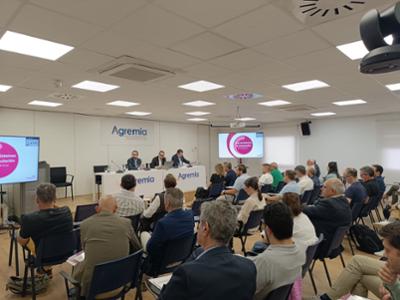

The incorporation of renewable energy requires storage tanks in DHW installations

The regulations of the Technical Building Code require the incorporation of renewable energies in new buildings, which implies the need for thermal energy (water) storage tanks in DHW production facilities and the addition of energy from different sources, according to Manuel Ruiz, member of the FEGECA Tank Commission.
FEGECA (manufacturers of heat generators and emitters) recently presented the "Guide to Water Storage Systems", drawn up by the Tanks Commission and published by the association, at a conference on "DHW (domestic hot water) production installations by storage in new buildings and refurbishment", which took place at Agremia's facilities in Madrid. The document includes technical information, practical criteria and references to current regulations for the design, installation and maintenance of water tanks. It provides a detailed description of different types of storage systems available on the market, and provides guidance for the calculation and selection of the most suitable equipment according to demand requirements. It also provides criteria for installation, considerations for integration into hybrid systems, characteristic type schemes and maintenance and water quality aspects.
Sonia Pomar, director of FEGECA, presented the conference, followed by Alberto Jiménez and Günter Kenk, members of the FEGECA Tanks Commission, who presented the Guide to Water Storage Systems, with Iván Vaquero, head of the Projects and Aid area of Agremia, as moderator.
At the round table that took place for the presentation of the Guide to Water Storage Systems, participants explained the reasons behind the creation of this guide, the target audience and the novelties it presents. Additionally, a discussion took place regarding the benefits of this guide for installers, both in new installations and maintenance. The regulatory context governing accumulation tanks was also presented and the importance of the UNE standards to complement the standardisation of this equipment was highlighted.
New construction and refurbishment
Subsequently, two sessions were given by two members of the FEGECA Tanks Commission, dedicated to the installation of DHW production systems by accumulation. The first, given by Manuel Ruiz, focused on the installation of these systems in new buildings. The second, given by Gaspar Martín, addressed the installation of DHW production systems by accumulation in refurbishment projects.
Manuel Ruiz argued that in new buildings, the regulations of the Technical Building Code (CTE) require the incorporation of renewable energy sources, which implies the need for thermal energy (water) storage tanks in the installations and the addition of energy from different sources. The greatest energy demand in new buildings is for Domestic Hot Water (DHW). New construction facilitates the integration of storage systems into buildings, and there is a wide range of storage tanks available for these systems.
Gaspar Martin, in rehabilitation, deems it essential to review the demands and needs for Domestic Hot Water (DHW). It is also important to reconsider the criteria for the application of HE4 according to geographical area. The use of heat pumps and renewable energies is currently a preferred solution, and if the building has a gas supply, the hybridisation of a boiler and a heat pump is an interesting option. This configuration requires less electrical power and less storage capacity.




